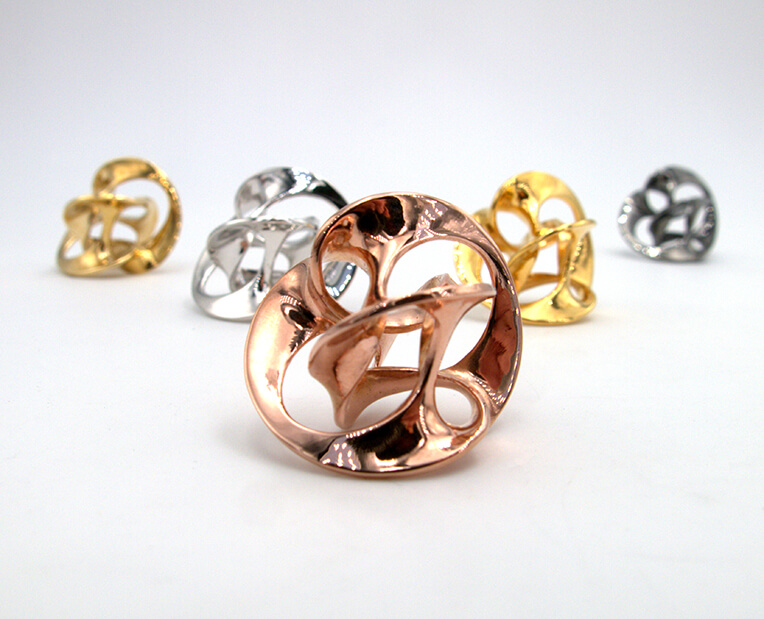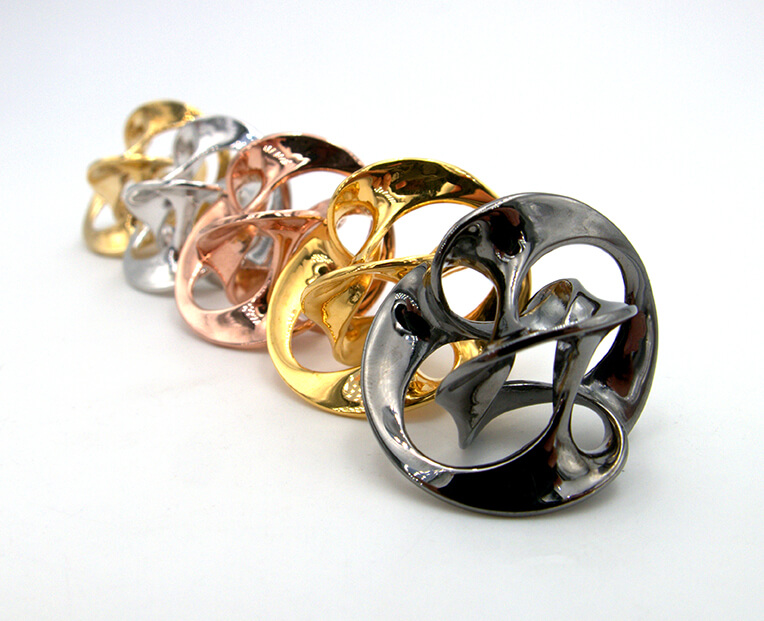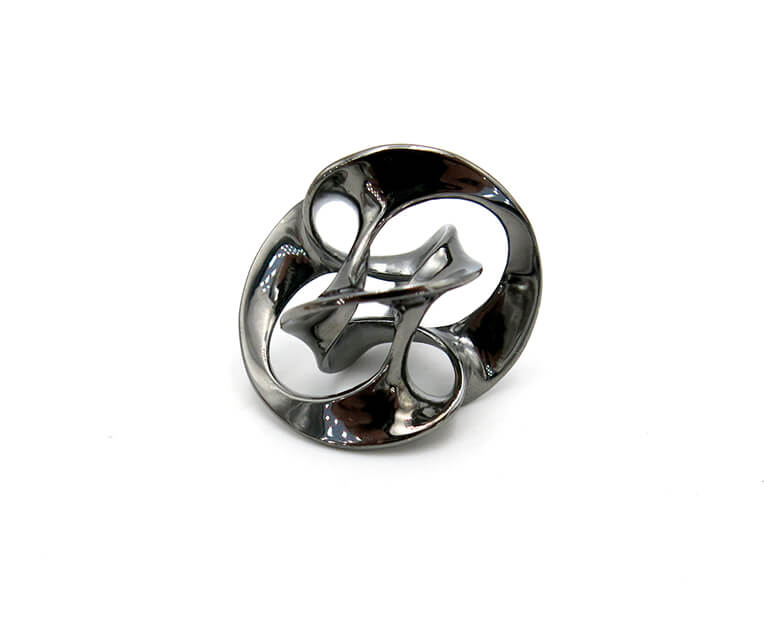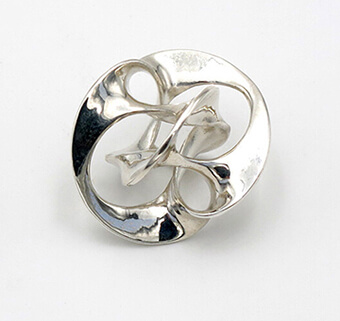| Standard layer thickness | 25 μm |
| Accuracy | Unpolished Max: 0.8mm
Polished Max: 0.8mm |
As a result, it is important that your uploaded file is the highest quality possible, such that no triangulation will occur in the final print. Yet, keep in mind that your 3D file cannot be up to 50Mb in size.
The layer thickness for our Brass is 25 µm. Shrinkage may occur during the printing process. Thus, parts should be designed with the following shrinkage considerations:
- Raw parts: up to 2% shrinkage (On Average)
- Polished parts: up to 3% shrinkage (On Average)
| Minimum wall thickness | 0.8 mm |
| Minimum wall thickness stemmed elements | 1 mm |
| Minimum wall thickness particular design aspects | 1 mm |

The walls of your design must adhere to the minimum thickness in order to guarantee the structure will be supported without breaking under its own weight. If the walls of your model are less than this minimum, you should simply thicken the walls in a 3D designing program or choose a material more adapted for thin designs.
A stemmed element is a design aspect that is at least twice as long as it is thick. For unsupported and stemmed elements or parts of the design with a particular design constraint, it is also important to respect a greater thickness in order to guarantee the object will not break. Please mind that if your model has a very weak geometry, it will need a more supported structure to survive the whole casting and finishing process. Also, try to avoid the very sharp edges. Due to our intensive polishing process, these edges will get rounded off, and the final result might be different than what you expected.
With a 0.8 wall thickness, your design will be slightly flexible. To obtain more rigidity, we advise a 2mm wall thickness. Brass is a relatively malleable and heavy material, it can be distorted if too much weight is applied to an area of your object. We recommend that you thicken the most stressed parts, or choose a more fitting material for your design.
Good to know
Brass is a relatively malleable material. The most stressed and fragile areas may be distorted. We recommend that you thicken them to avoid distortions.
Do not forget
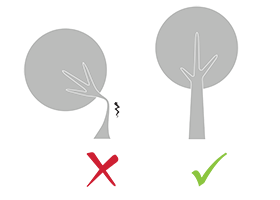
Keep in mind that our solidity check tool does not detect physical aberrations such as floating parts, unstable position, parts supporting too much weight relative to their thickness, etc. Particular care must be given to the geometry of your design and the most stressed parts must be thickened.
| Minimum size of details | 0.4 mm |
| Minimum height and width details | Embossed: 0.5 mm
Engraved: 0.4 mm |
| Minimum height and width for a readable text | Width: 0.5 mm
Height 1.5 mm |
| Enlargement ratio | 1/1 |

For your plated 3D printed objects, the polished/premium cast materials the minimum wall thickness is 0.8mm. In wire, it should be 1.20mm.
For your plated 3D printed objects, the minimum engraved and embossed detail level should be 0.3mm for raw and 0.35 for polished cast material. The depth to width ratio should be 1:1. If the depth of the model is larger than the width we can have problems in casting.
For brass, the main determining factor in a detail minimum size is the casting process. As an object is copied into a mold then refilled with brass, some etched and embossed details become more complicated to fill. Thus in order for detail and text to be visible and will not break we recommend following our recommended sizes at the very least. To ensure better visibility, details’ width must be at least as big as their depth.
| Enclosed parts? | No |
| Interlocking parts? | No |

Brass models do not have the ability to be printed with objects enclosed within another object. This is because the object is first printed in wax, which requires supports for otherwise free-floating objects.
| Minimum spacing between fixed walls | 0.3 mm |
 Clearance is the space between any two parts, walls or wires. Products are printed in wax, and then a liquid plaster mold is poured around them. If the clearance between features is very small, the plaster may not fully infiltrate the tiny gap. And if it does, a plaster wall that is too thin can break when the liquid metal is poured around it. Both issues can cause defects in your product. To ensure the successful creation of your product, make the clearance between walls and wires greater than the indicated minimum. If your clearance is too small, try making the gap bigger, or consider fusing the features if their independence is unnecessary.
Clearance is the space between any two parts, walls or wires. Products are printed in wax, and then a liquid plaster mold is poured around them. If the clearance between features is very small, the plaster may not fully infiltrate the tiny gap. And if it does, a plaster wall that is too thin can break when the liquid metal is poured around it. Both issues can cause defects in your product. To ensure the successful creation of your product, make the clearance between walls and wires greater than the indicated minimum. If your clearance is too small, try making the gap bigger, or consider fusing the features if their independence is unnecessary.

Assembled pieces are currently not possible with our brass printing option.

As the print is first carried out in wax, the object cannot be hollowed in the manner some of our other materials are able.
| Files with Multiple Objects? | No |

It is not possible to 3D print a 3D file containing several objects in brass.



 Connect with Google
Connect with Google Connect with Facebook
Connect with Facebook